© 2025 MJH Life Sciences™ , Patient Care Online – Primary Care News and Clinical Resources. All rights reserved.
Tobacco and Lung Health: A “World No Tobacco Day” Quiz
World No Tobacco Day is on May 31, 2019. Patient Care helps support the WHO observance with this quick 10-question quiz on the health impact of smoking and the benefits of quitting.
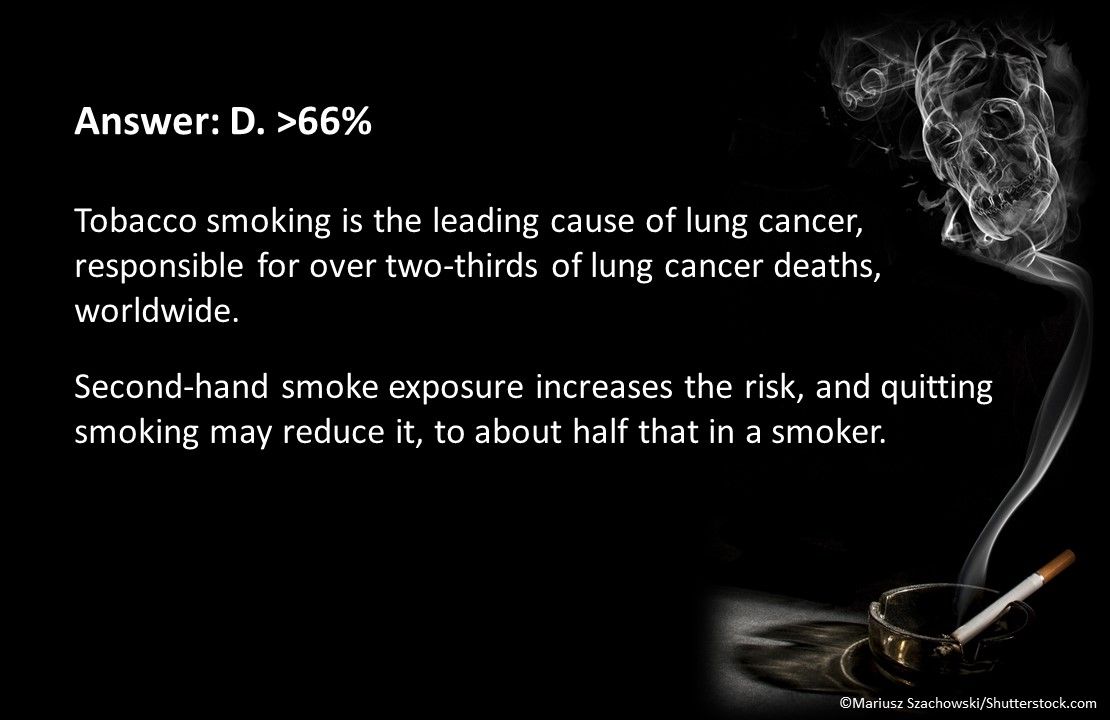
Answer: D. >66%. Tobacco smoking is the leading cause of lung cancer, responsible for over two-thirds of lung cancer deaths, worldwide. Second-hand smoke exposure increases the risk, and quitting smoking may reduce it, to about half that in a smoker.
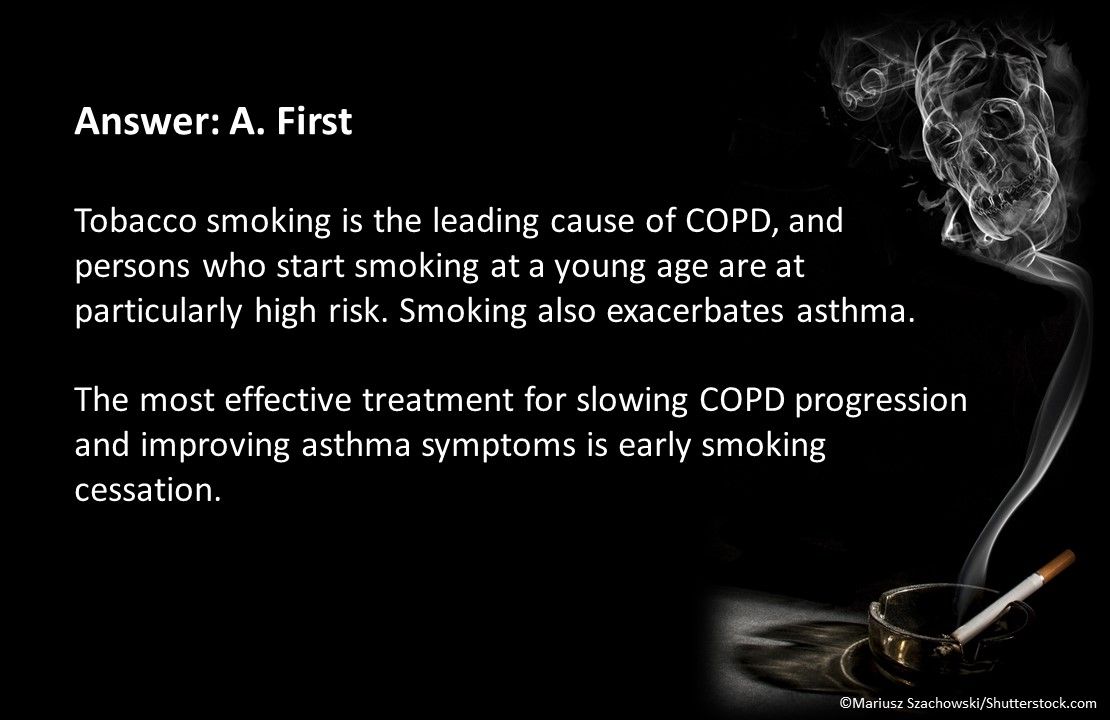
Answer: A. First. Tobacco smoking is the leading cause of COPD, and persons who start smoking at a young age are at particularly high risk. The most effective treatment for slowing COPD progression and improving asthma symptoms is early smoking cessation.
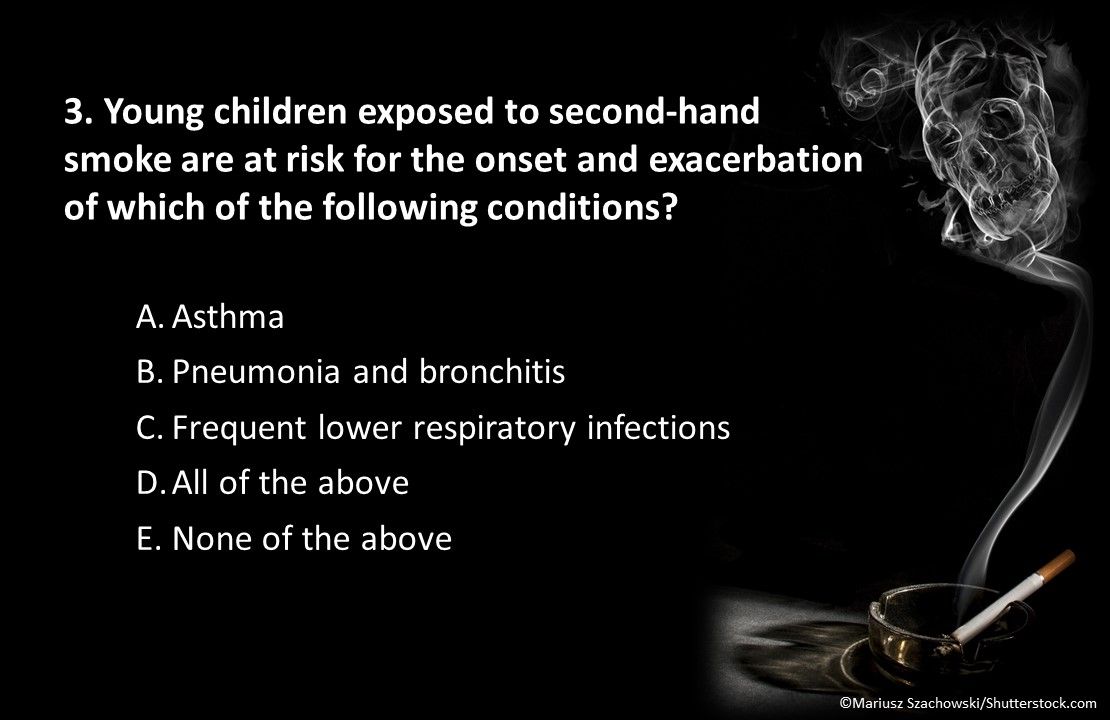
Question 3. Young children exposed to second-hand smoke are at risk for the onset and exacerbation of which of the above conditions?
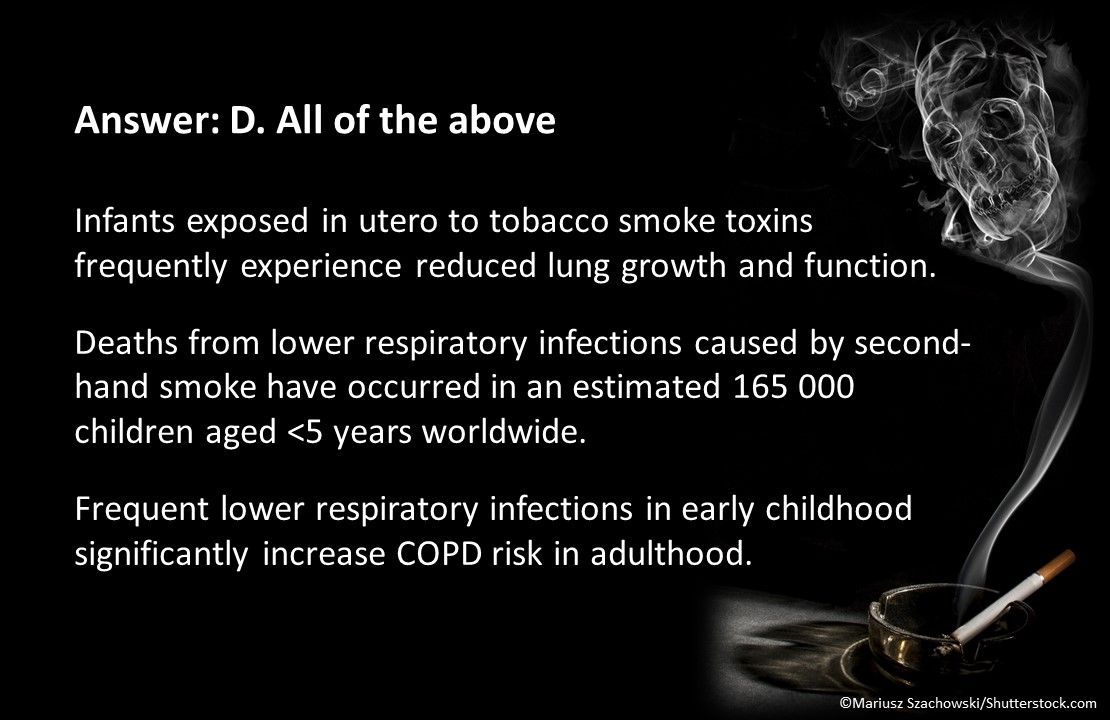
Answer: D. All of the above. Infants exposed in utero to tobacco smoke toxins frequently experience reduced lung growth and function. Deaths from lower respiratory infections caused by second-hand smoke have occurred in an estimated 165 000 children aged <5 years worldwide; frequent lower respiratory infections in early childhood significantly increase COPD risk in adulthood.

Answer: B. Doubles the risk. Smokers are twice as likely as nonsmokers to contract TB; latent TB occurs in ~25% of the world population, placing them at greater risk for active disease. The risk of morbidity and mortality from respiratory failure is significantly increased in patients with active TB who incur the additional lung damage caused by cigarette smoking.
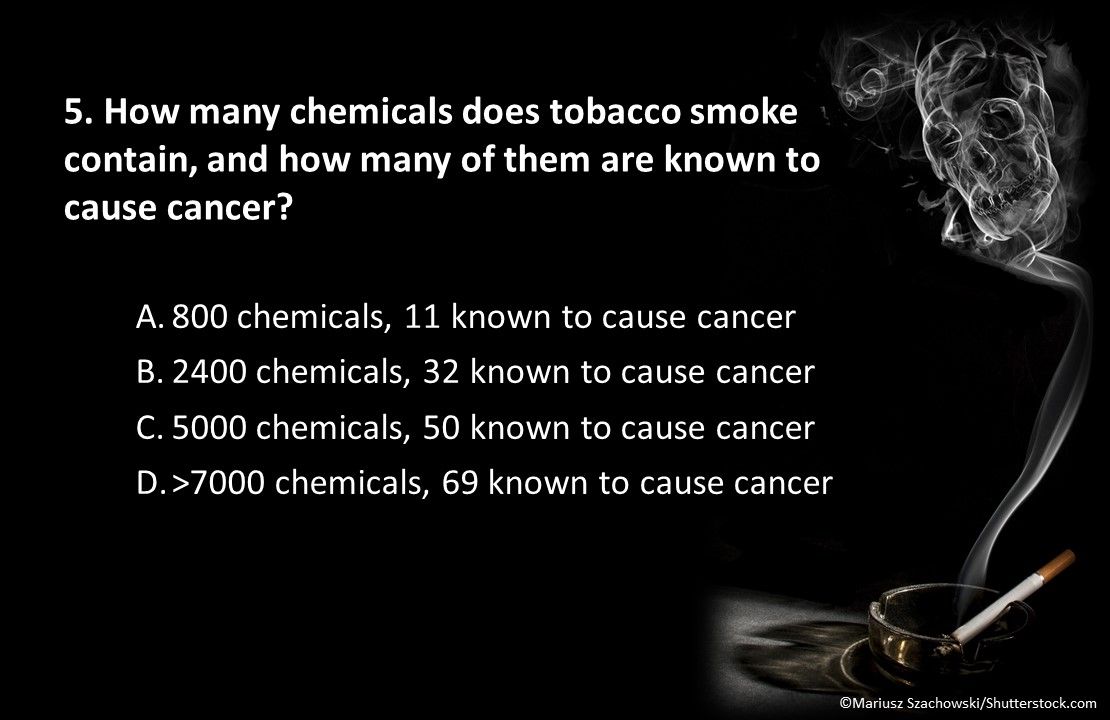
Question 5. How many chemicals does tobacco smoke contain, and how many of them are known to cause cancer?
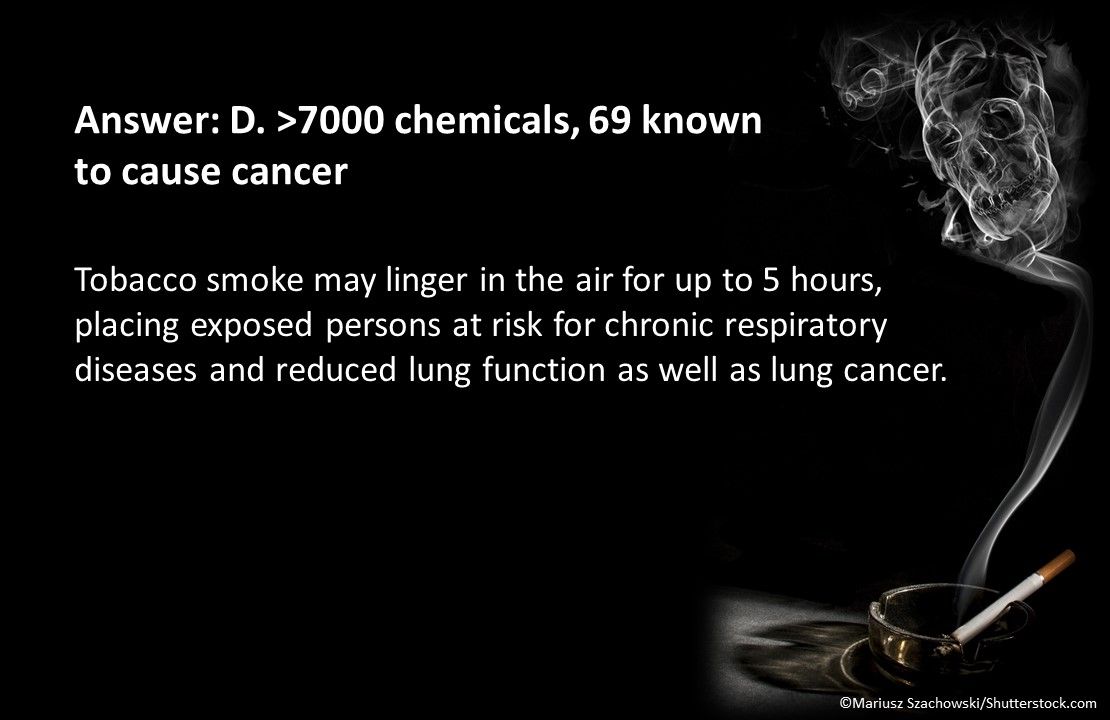
Answer: D. >7000 chemicals, 69 known to cause cancer. Tobacco smoke may linger in the air for up to 5 hours, placing exposed persons at risk for chronic respiratory diseases and reduced lung function as well as lung cancer.
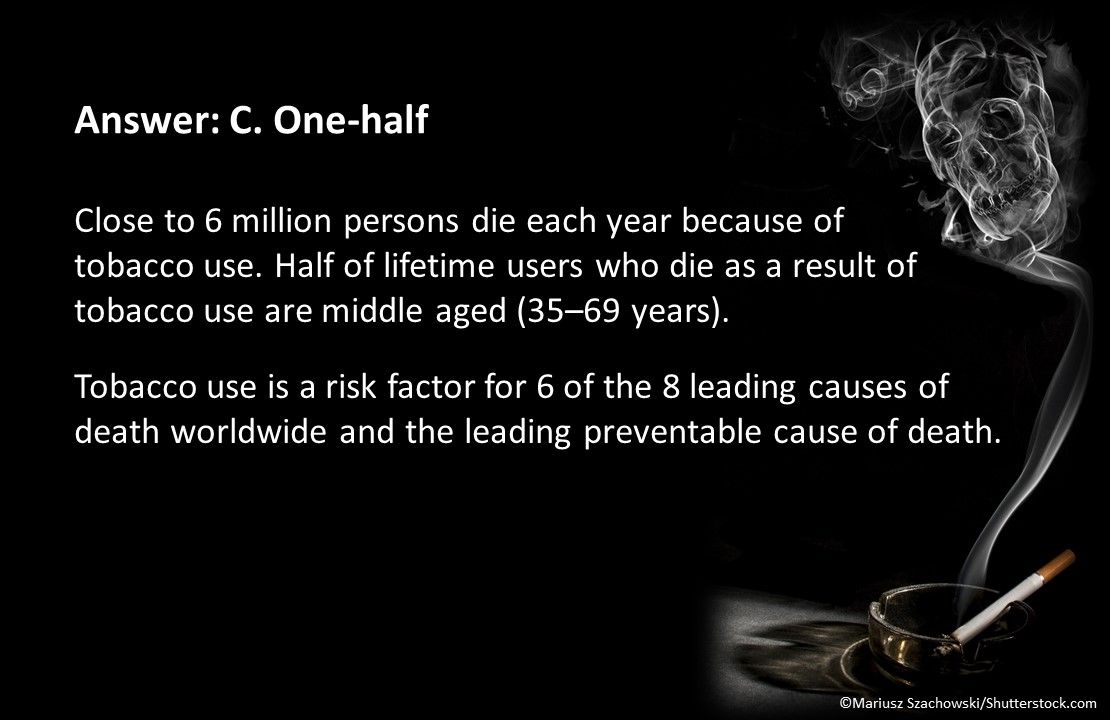
Answer: C. One-half. Close to 6 million persons die each year due to tobacco use; half of lifetime users who die as a result of tobacco use are middle aged (35–69 years). Tobacco use is a risk factor for 6 of the 8 leading causes of death worldwide and the leading preventable cause of death.
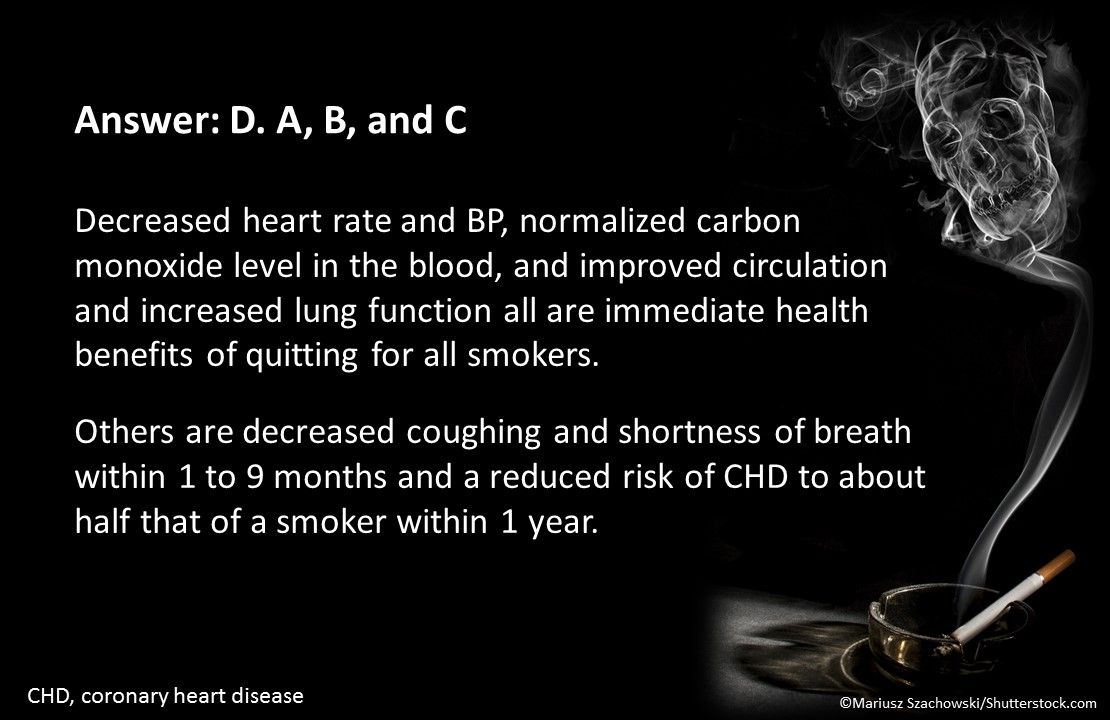
Answer: D. A, B, and C. Decreased heart rate and BP, normalized carbon monoxide level in the blood, and improved circulation and increased lung function all are immediate health benefits of quitting for all smokers. Others are decreased coughing and shortness of breath within 1-9 months and a reduced risk of CHD to about half that of a smoker within 1 year.

Question 8. True or false? Stroke risk is reduced to that of a nonsmoker 5 to 15 years after smoking cessation.
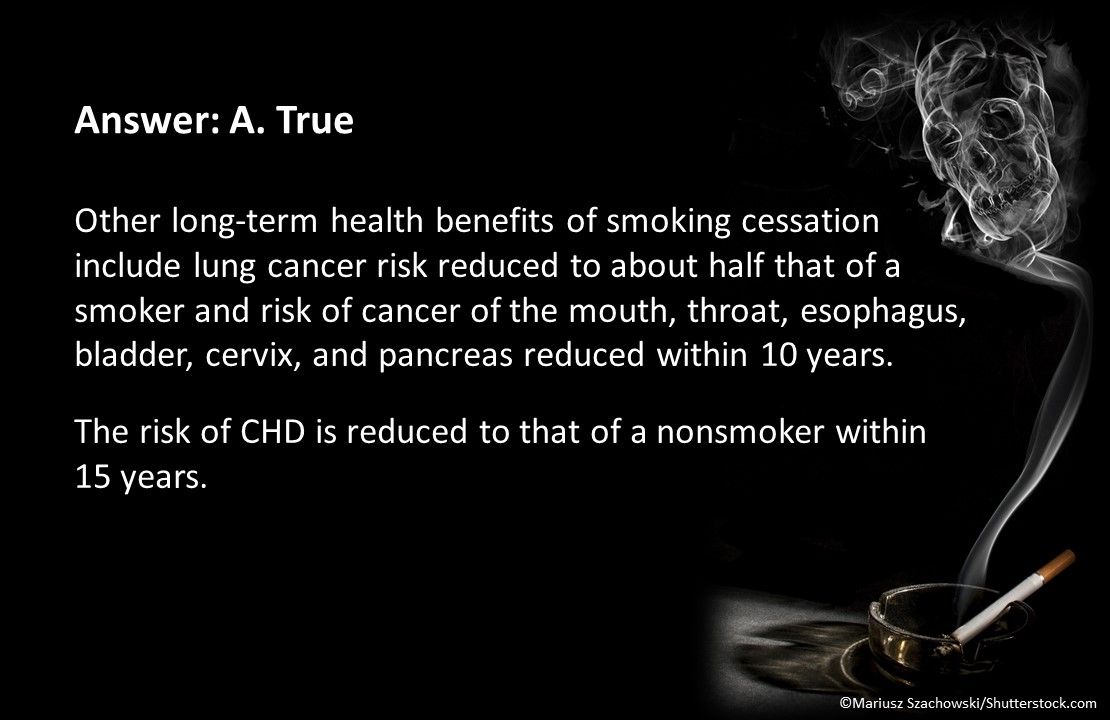
Answer: A. True. Stroke risk is reduced to that of a nonsmoker 5-15 years after the patient stops smoking. Other long-term health benefits of smoking cessation include lung cancer risk reduced to about half that of a smoker and risk of cancer of the mouth, throat, esophagus, bladder, cervix, and pancreas reduced within 10 years; risk of CHD is reduced to that of a nonsmoker within 15 years.

Question 9. Approximately how many years are gained in life expectancy for persons who quit smoking at age 30 years vs those who continue smoking?

Answer: B. 10 years. Persons who quit smoking at about age 30 years gain 9 years of life expectancy; those who quit at about 50 years gain 6 years; and those who quit at about 60 years gain 3 years.
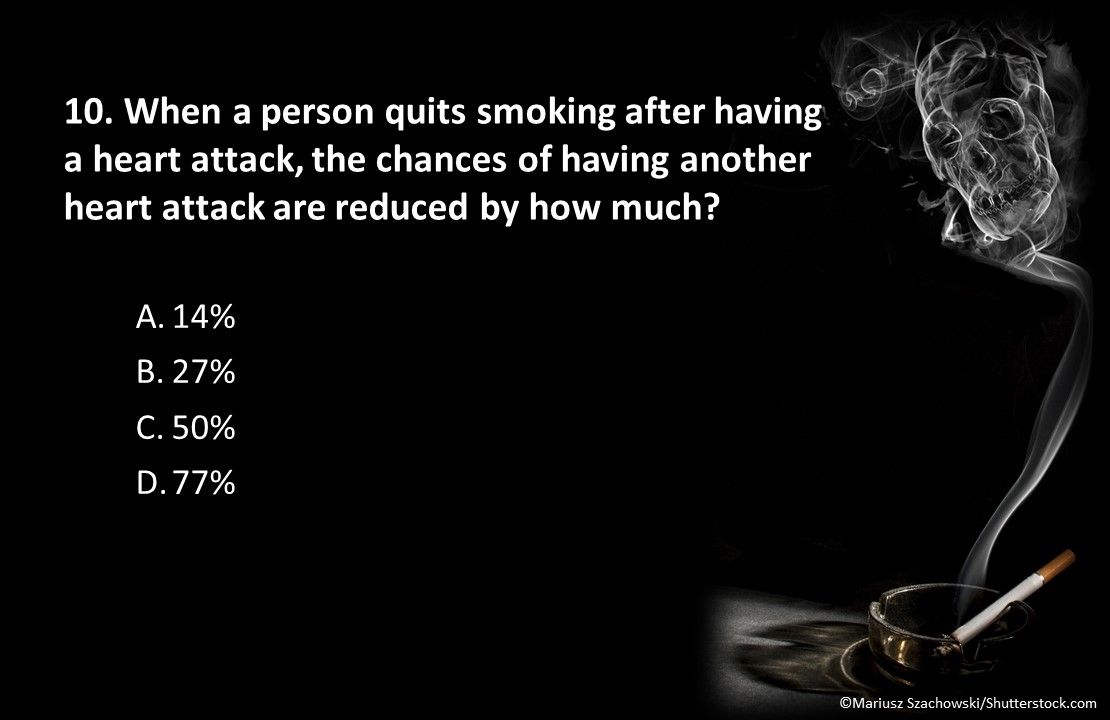
Question 10. When a person quits smoking after having a heart attack, the chances of having another heart attack are reduced by how much?
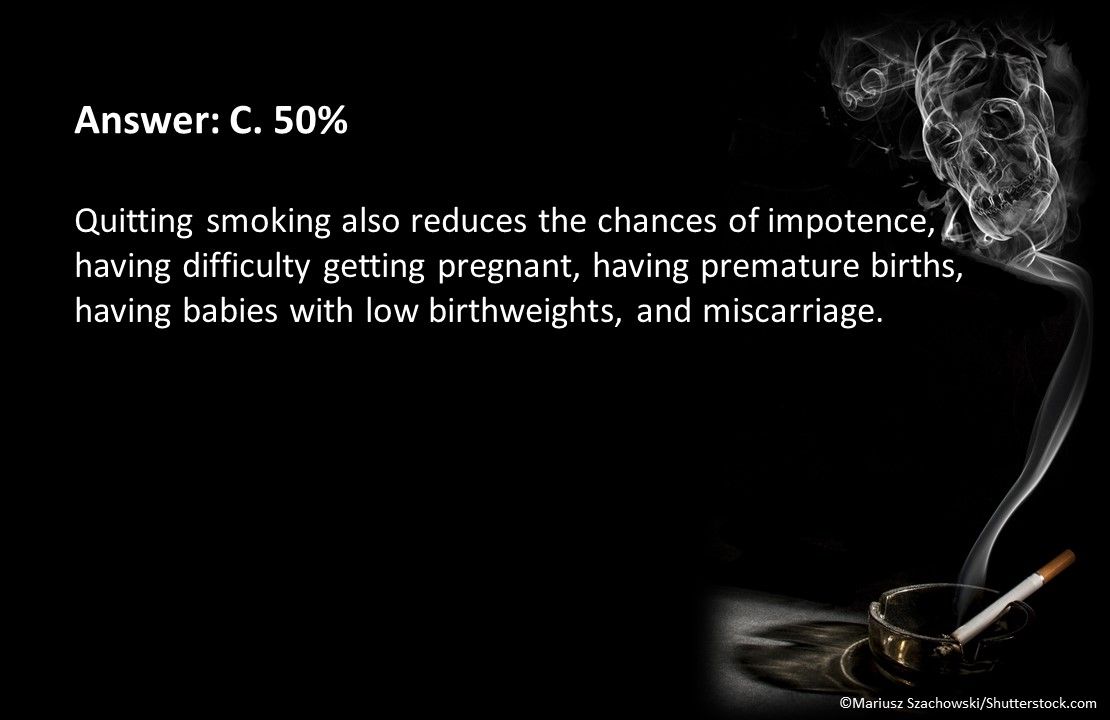
Answer: C. 50%. Quitting smoking also reduces the chances of impotence, having difficulty getting pregnant, having premature births, having babies with low birthweights, and miscarriage.
As part of its efforts to reduce tobacco consumption, the WHO developed a toolkit for primary care physicians to provide guidance in offering patients brief tobacco interventions as part of routine practice.
May 31 is World No Tobacco Day, the annual observance designated by the World Health Organization (WHO) to promote awareness of lung health and the benefits of smoking cessation.Find out what you know about the harmful effects of tobacco use and how your patients can benefit from quitting with these 10 questions based on the many pages of facts and resources on the WHO Web site.








